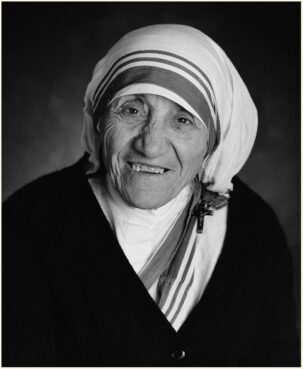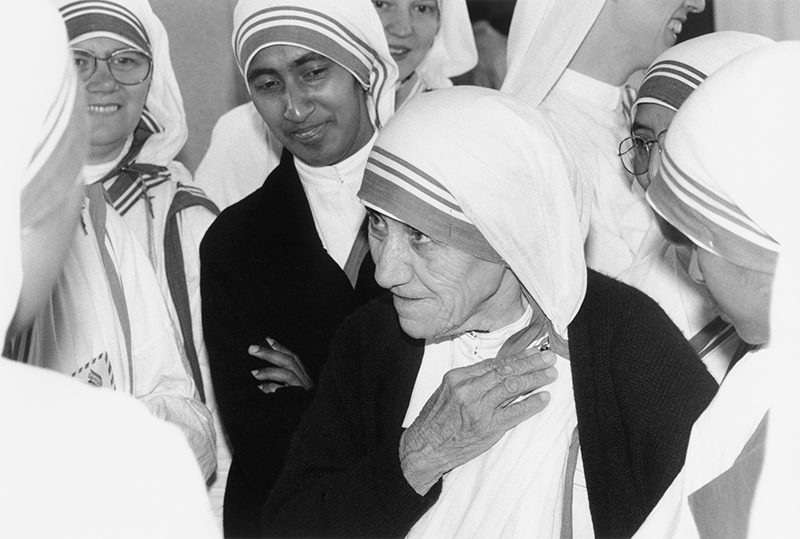Mother Teresa felt a divine calling to cater and minister to the poorest of the poor and eventually followed that voice to the misery-filled streets in India. By 1948, the nun was well known for helping the dying and suffering in Calcutta, while wearing a simple cotton sari, worn by the poor in India, which would eventually become the habit of her followers, the Missionaries of Charity.
Lepers, orphaned children, the sick and the dying, all found refuge in the homes created by Mother Teresa to care for them. The documentary shows that her work continues today, with the sisters of her order caring for the spiritual and physical needs of the outcasts.

Mother Teresa in an undated photo from “Mother Teresa: No Greater Love.” Courtesy image
Known for being camera-shy, Mother Teresa disliked sitting for interviews and portraits even as her fame grew. A direct order from the Vatican was required for her to sit down for an interview with BBC’s Malcolm Muggeridge, which in 1971 resulted in a book and documentary that skyrocketed the tiny nun to international stardom.
The documentary shows Mother Teresa winning the Nobel Peace Prize in 1979 and establishing a special relationship with St. John Paul II, who would send her in his stead from Beirut to Moscow to face the complex realities of the Cold War during his papacy.
Whether on behalf of pregnant women with drug addictions, people suffering from AIDS or gangsters in the outskirts of Chicago, Mother Teresa is seen in the documentary fighting against prejudice and hatred. “Each one of them is Jesus in a distressing disguise,” she tells the camera with a smile.
“Mother Teresa was a spiritual giant and a great saint of the century, but also a great saint for our time,” said David Naglieri, who directed and produced the film.
As Mother Teresa’s fame grew, so did the criticism. Her position against abortion and contraception has been controversial for abortion-rights advocates, while others argued the state of her facilities for the dying was inadequate.
British author and journalist Christopher Hitchens was among her most adamant critics, calling her a hypocrite who was more interested in promoting the gospel than helping the poor. The Rev. Brian Kolodiejchuk, the postulator for Mother Teresa’s canonization cause, called such claims “wrong or misrepresented” at the news conference.
The documentary does not shy away from representing the deep spiritual crisis that Mother Teresa underwent during her 66 years serving the poor, when she questioned the presence of God and despaired over the suffering in the world.

Mother Teresa surrounded by other Missionaries of Charity nuns in an undated photo from “Mother Teresa: No Greater Love.” Courtesy image
Her ministry inspired the work of five branches of the Missionaries of Charity who now run 764 charity homes around the globe. The documentary takes care to portray the work of its nuns encouraging the poor in New York’s Bronx borough or cuddling a macrocephalus child in Kenya.
John Paul II beatified Mother Teresa in 2003 and she was made a saint in 2016 by Pope Francis, who described her as “a model of holiness” to the thousands gathered in the square.
“I think Mother is calling all of us to continue what God has done in her through us,” Thérèse said. “She asks us to be open to receive this love of God and give this love by our service to the poor.”
This article originally appeared here.

